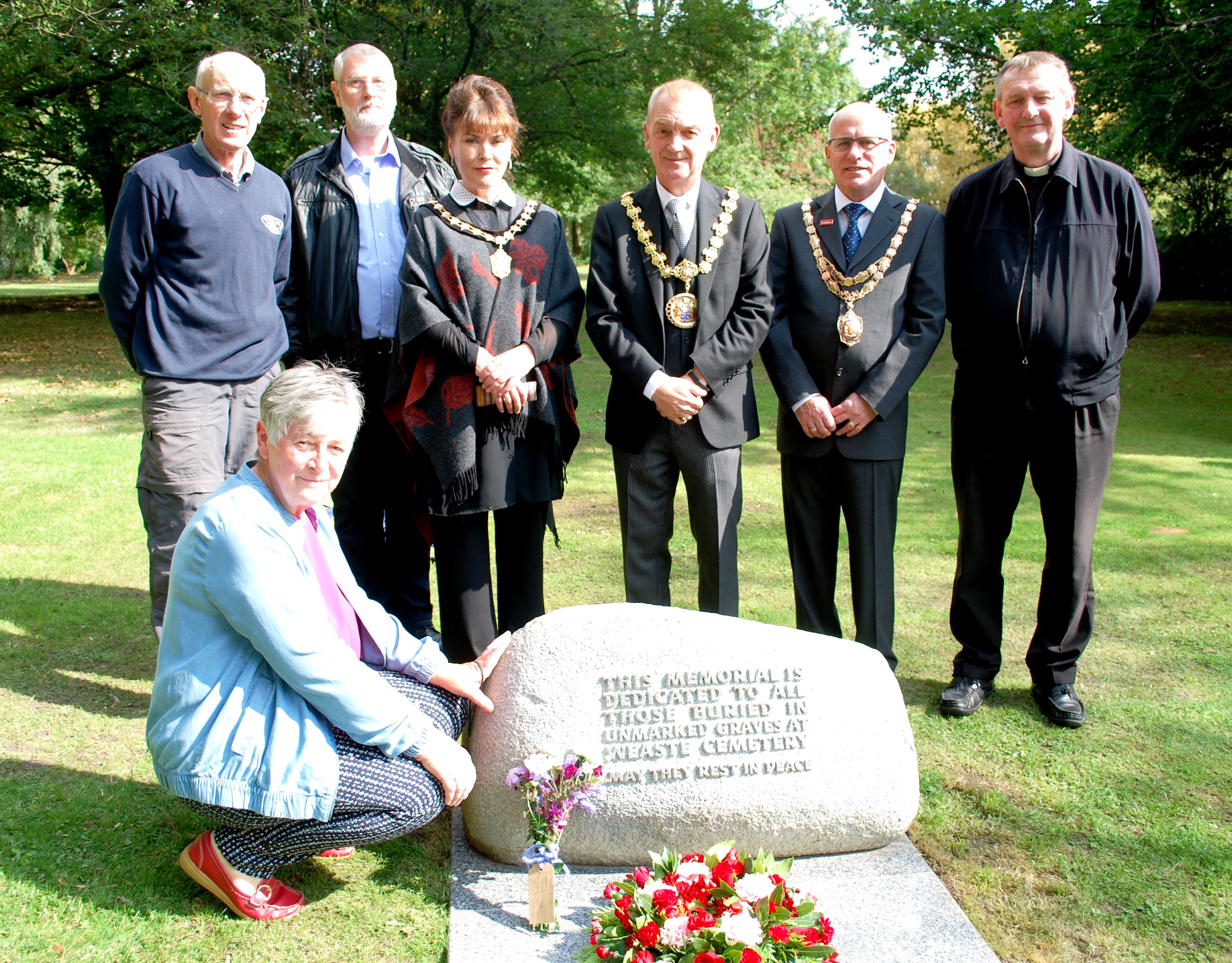A Salford factory girl who died in 1862 has become the first person to be remembered at a new memorial.
Seventeen year old Hannah Dean was buried in an unmarked grave in Weaste Cemetery on October 26, 1862 after being hit by a train on a night out with friends.
Hannah, and thousands of other people buried without memorials in the cemetery, have been remembered as The Ceremonial Mayor of Salford Councillor Peter Dobbs and Pete Kilvert, Secretary of the Friends of Salford Cemeteries Trust unveiled a new tribute at the Victorian burial ground.
Councillor Dobbs said he was very honoured to unveil the memorial, which was carved from a single granite boulder.
“Salford was at the heart of the industrial revolution and life expectancy was short. Many families joined burial clubs but many just could not afford a grave stone. The Friends of Salford Cemeteries Trust asked for this memorial for them and I’m delighted with this dignified and lasting tribute,” he said.
Local resident Jean Coward laid flowers at the stone in memory of her great grandfather Joseph Littler who was buried in Weaste in June 1904.
“I found he was buried here while researching my family history. He was a cab driver, just 57 when he died and left five daughters including my gran who was only 13. It means a lot to have a focal point where I can lay flowers,” said Jean.
Mr Kilvert, who helped place a memorial wreath on the stone, also paid tribute to four other people buried in the cemetery, typical of those buried without memorials or whose gravestone has been lost over time.
The body of the Unknown Man was pulled from the River Irwell in 1881 after flooding. Despite newspaper appeals no-one came forward until two weeks after his burial when two women said he could be their missing husband. The Home Office granted an exhumation order and, after dark by the light of a lantern, the grave was opened and John Horrocks was identified by his wife. He was then re-interred.
John Reuban Ledger, 61, was buried in the cemetery in 1890 after he committed suicide in the Salford Union Workhouse. Mr Ledger left a note saying he was lonely and unhappy and fully aware of what he was doing. Under Victorian law, because his mind was stable he was judged to have murdered himself and thus forfeited the right to a Christian funeral.
Travelling showman Randall Kay Williams, born in Liverpool in 1846, who developed conjuring and ghost shows and brought moving pictures to the public before cinemas was buried in the cemetery in 1898. Mr Williams, who died aged 52 of typhoid fever,, helped to form the Showman’s Guild and became known as the King of Showmen for his support for the industry. His grave was marked by a stone which has since vanished.
Abdol Barrick, 70, a merchant seaman from Calcutta, India, died of pneumonia aboard the SS Malahaud berthed in Manchester docks and was buried in the cemetery in 1923.
Photo caption (left to right): Jean Coward, Michael Critchely of Critchley Memorials who sculpted the stone, Pete Kilvert, secretary of the Friends of Salford Cemeteries Trust, The Mayor’s Consort Claire McCourt, the Ceremonial Mayor Councillor Peter Dobbs, the Mayor’s Consort Alan Davis and the Rev Charles Gorton of St Luke’s Church, Weaste, who blessed the stone.







